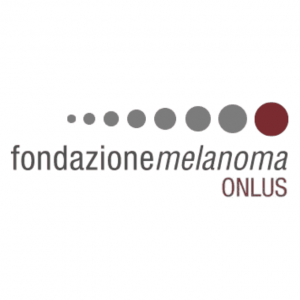Project Description
SECOMBIT – Clinical Trial
Sequential Combo Immuno & Target therapy (SECOMBIT) study. A three arms prospective, randomized phase II study to evaluate the best sequential approach with combo immunotherapy (ipilimumab/ nivolumab) & combo target therapy (LGX818/MEK162) in patients with metastatic melanoma and BRAF mutation
The SECOMBIT study investigates the best sequence/combination strategy in patients with advanced melanoma. The combination BRAF (B-raf murine sarcoma viral oncogene homolog B1) inhibitor plus mitogen-activated protein kinase (MEK) inhibitor seems to be more effective in the V600 BRAF mutated advanced melanoma patients compared to treatment with the BRAF inhibitors alone. In fact, a phase I-II study (Flaherty et al, 2012) showed a better overall response rate (ORR) and progression-free survival (PFS) in the combination arm (dabrafenib plus trametinib) respect to the single agent treatment (dabrafenib): 76% and 9.4 months versus 54% and 5.8 months respectively. Another phase I study with a similar combination (vemurafenib plus cobimetinib) showed an ORR of 85% in vemurafenib-naïve patients (Martinez Garcia et al, 2012). Recently, the results of a phase I study about the combination ipilimumab plus nivolumab have been reported (Wolchock et al, 2013). In this study at the selected schedule (ipilimumab 3 mg/kg and nivolumab 1 mg/kg), 53% of patients had an objective response, all with tumor reduction of 80% or more. Reponses were durable, although longer follow-up is needed. A recent phase I study has shown a high rate of liver toxicity with the combo ipilimumab plus vemurafenib (Ribas et al, 2013) which makes difficult a combination with these two different drugs. Moreover, a better efficacy of the sequencing treatment BRAF inhibitors/ipilimumab vs. the single agent treatment was also observed; for this reason, it was also suggested to start immunotherapy treatment in the BRAF V600 mutated melanoma population as first option, in order to increase the percentage of patients who can benefit from the sequencing (Ascierto et al, 2012; Ascierto et al, 2013), considering the possibility of a fast progression of the disease after the BRAF inhibitors treatment (Ascierto et al, 2012).
Taking into account these considerations, it seems impossible to think to combine all the four compounds (the target agents and immunomodulating monoclonal antibodies). The risk of a high rate of toxicity is realistic and would render this approach inapplicable. Sequencing with these different combinations seems to be more feasible. However, also in this case it would be important to start with the best combination in order to give to the patients the best chance to increase the overall survival. The aim of this prospective randomized phase II study is to evaluate the sequencing of these two different combinations and evaluate which is the best of these approaches. The study incorporates an in-depth translational analysis with a wide range of biomarkers potentially useful to personalize treatment on the grounds of patient/disease’s characteristics.
The study population includes 230 patients of either sex aged ≥ 18 years with metastatic melanoma and BRAF V600 mutation. Combinations and sequential treatment explored in the SECOMBIT study have been carefully selected on the grounds of the existing data in literature.
The correlative biological study is performed for the evaluation of biomarkers on the biological samples available (paraffin-embedded tissue, frozen tissue, blood, serum, etc). Such analysis has the potential to identify useful tools for optimization of treatment, with improved treatment efficacy and better allocation of financial resources.
Tumor tissue biomarkers evaluation will assess: a) Immune status: CD3, CD8, and CD4 T cells; Activated T cells; T regulatory cells; Dendritic cells; b) Resistance to immunotherapy agents: Checkpoint receptors/ligands; myeloid derived suppressor cells (MDSCs); c) Resistance to targeted agents: aberrations in MEK/PI3K pathways, cytokines that interact with tyrosine kinase receptors (VEGF, HGF and their cognate receptors); d) Mutational load and neoantigen profile.
The evaluation of peripheral blood biomarkers concerns: a) Immune status/Resistance to immunotherapy agents: Activated T cells; Memory/Exhausted T cells; T regulatory cells; MDSCs; Inflammatory response; Creactive protein (CRP); TCR Sequencing/Gene Expression analysis; b) Response/Resistance to targeted agents: Apoptotic tumor cells (as measured by circulating tumor DNA); soluble hepatocyte growth factor (sHGF); serum vascular endothelial growth factor (sVEGF), soluble interleukin-2 receptor (sCD25); c) Immunotherapy SNP Panel will be also assessed at baseline.
The objective of the biomarkers ancillary study (which is conducted in a subgroup of approximately 80-90 patients) is to focus on understanding mechanisms of action/resistance. In particular, the ancillary study will inform how to sequence targeted RAF/MEK agents with immunotherapy agents (i.e. ipilumumab and nivolumab) in melanoma and is hypothesis-generating only.
Partners:
Dr. Paolo A. Ascierto, Istituto Nazionale dei Tumori, Fondazione G. Pascale, Naples (PI) ; Prof. Giuseppe Palmieri, Unità Genetica dei Tumori CNR, Sassari; Italy; Dr. Ignacio Melero, Cancer Institute, Pamplona, Spain.
Publications:
Ascierto PA, Casula M, Bulgarelli J, Pisano M, Piccinini C, Piccin L, Cossu A, Mandalà M, Ferrucci PF, Guidoboni M, Rutkowski P, Ferraresi V, Arance A, Guida M, Maiello E, Gogas H, Richtig E, Fierro MT, Lebbe C, Helgadottir H, Queirolo P, Spagnolo F, Tucci M, Del Vecchio M, Cao MG, Minisini AM, De Placido S, Sanmamed MF, Mallardo D, Paone M, Vitale MG, Melero I, Grimaldi AM, Giannarelli D, Dummer R, Sileni VC, Palmieri G. Sequential immunotherapy and targeted therapy for metastatic BRAF V600 mutated melanoma: 4-year survival and biomarkers evaluation from the phase II SECOMBIT trial. Nat Commun. 15(1):146, 2024





